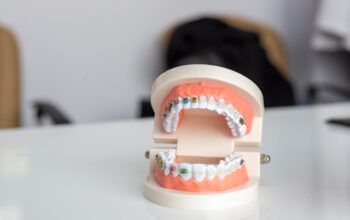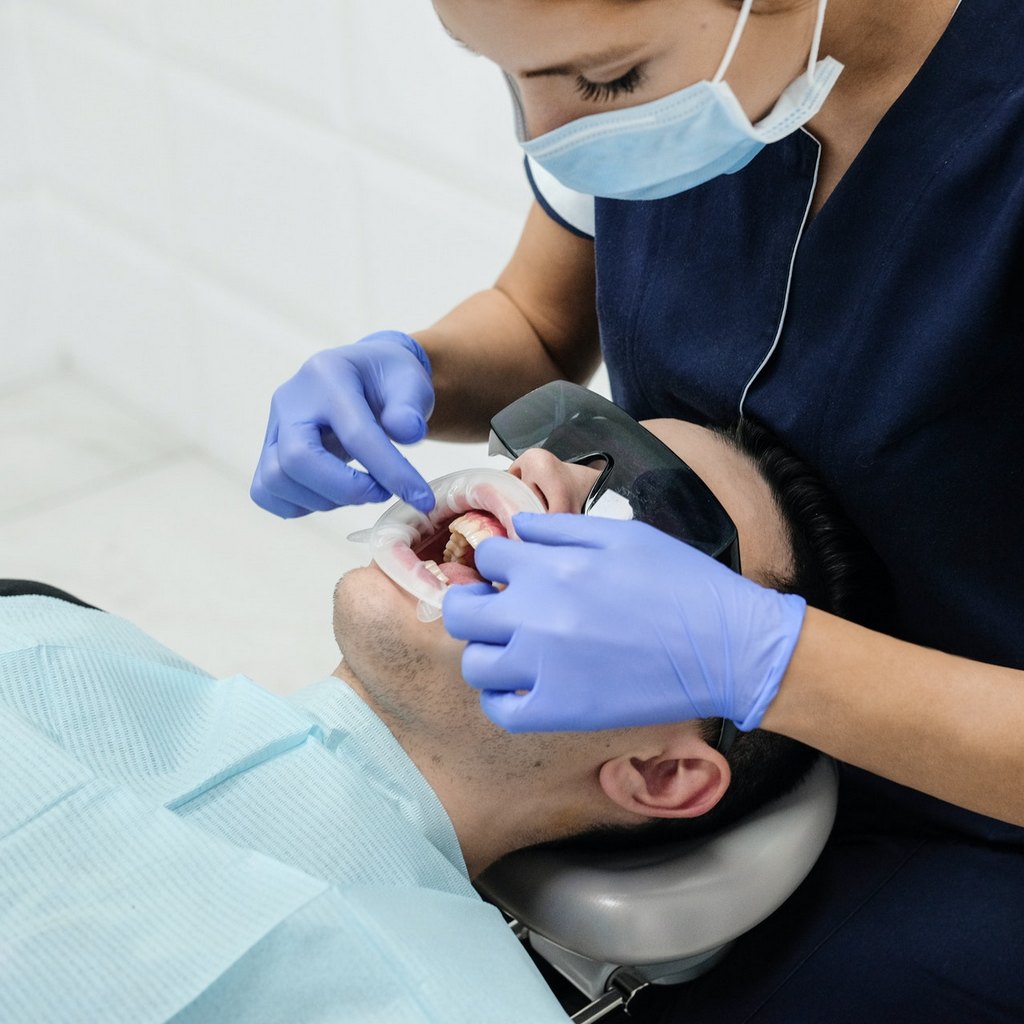There are many principles and canons that we follow to create your unbeatable smile, changing your appearance. It is known that beauty is first and foremost about harmonious proportions. There are many parameters of facial proportions, which should be in mutual harmony.
Here are just some of the many principles that we adhere to, the basic and most important:
Parallelism of the horizontal plane.
Ideally, the smile line is aligned so that it is parallel to the interfacial eye line, as shown.
Symmetry
To create a perfect smile, an important criterion is the line that runs between the front central incisors on the upper jaw. It should coincide with the midline of the face. Symmetry in relation to the midline of the face is a very important point in creating an attractive smile. Even when it may not be 100% possible, the illusion of symmetry should be created. This is often achieved through the symmetry of the two center teeth and other teeth close to the center line. Farther away from the center, the asymmetry is not as noticeable.
Smile Line
In a perfect smile, the incisive edges of the upper teeth should follow the contour of the lower lip. This visual effect of the smile gives the face a youthful appearance. A woman has a more curved smile line than a man. Men’s smile lines are straighter. The vertical position of the upper and lower lip changes progressively with age under the effect of gravity. The soft tissues of the face sag with age, in part due to a natural reduction in skin elasticity. The upper lip lengthens and covers most of the crowns of the upper incisors, while the lower lip descends, exposing the crowns of the lower incisors. As a result, the exposure of the upper incisors at rest characterizes – youth and beauty, the lower incisors – old age. By correcting the smile alone, a person can be rejuvenated!
Gum contour level
The gum level contour should be different in different teeth, but it is important that it is the same on symmetrical teeth. When the gum level over one tooth is higher than over the other, the shape of the teeth visually appears different. The first incisors may have the same gum level as the canines or the canines slightly higher. In terms of aesthetics, this is a very important factor. If necessary, gum correction can be performed by a periodontist. On the lateral incisors (twins), the gum level is normally 0.5-1 mm lower than on the central incisors. When smiling, the gingiva is not exposed or is exposed in a minimal amount. A gingival smile is considered not very harmonious if the gingiva is more than 3-4 mm visible. There are also several ways to correct it, depending on the cause (the lip may simply be short, or it may rise strongly when smiling, improper bite, large gums, etc.)
The width of the smile
A harmonious smile exposes about 10 teeth. The more teeth a smile reveals, the wider it seems and therefore more attractive, although of course there are limits.
The proportions of the teeth
Given that the front upper teeth are the most striking of all the others, consider the ideal proportions of these very teeth. The ideal ratio of front tooth height to width is 1:0.75. Visually, it is these teeth that seem the most beautiful. Nature does not always give us such a beautiful shape of teeth, but modern aesthetic dentistry techniques allow us to create these proportions if necessary.
The level of the incisal edges of the teeth
It is different for the first 6 teeth, as shown in the picture. The smile is often created when the incisal edges of the teeth are worn away (either because of pathological wear of the teeth or simply due to age). Nowadays, in aesthetic dentistry there are many ways of creating a harmonious appearance of such teeth.
Here are a few basic parameters which help us on our way to create a perfect smile. Now you, too, are to some extent able to assess how close your smile is to the ideal one and what you would like to change.








